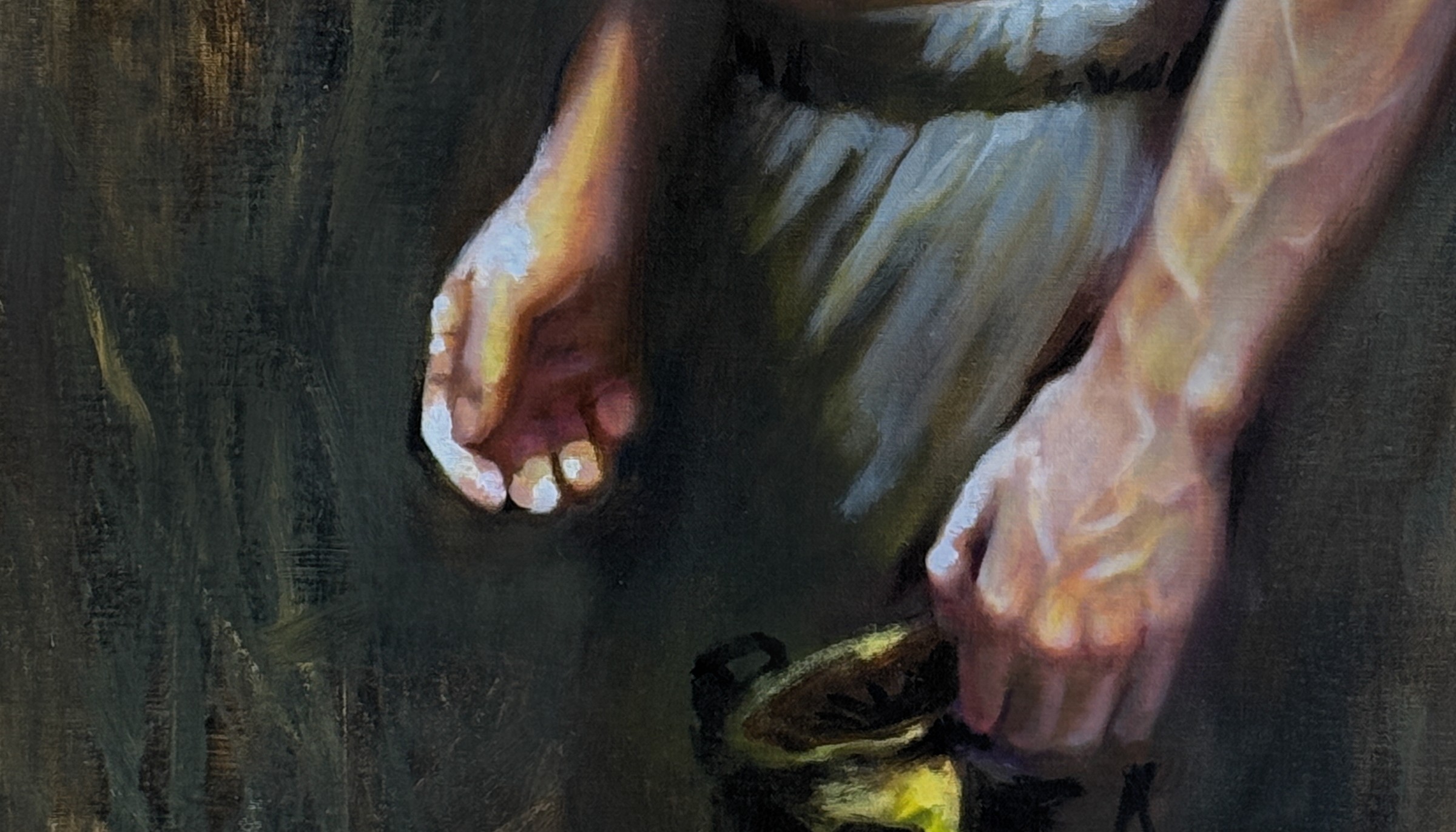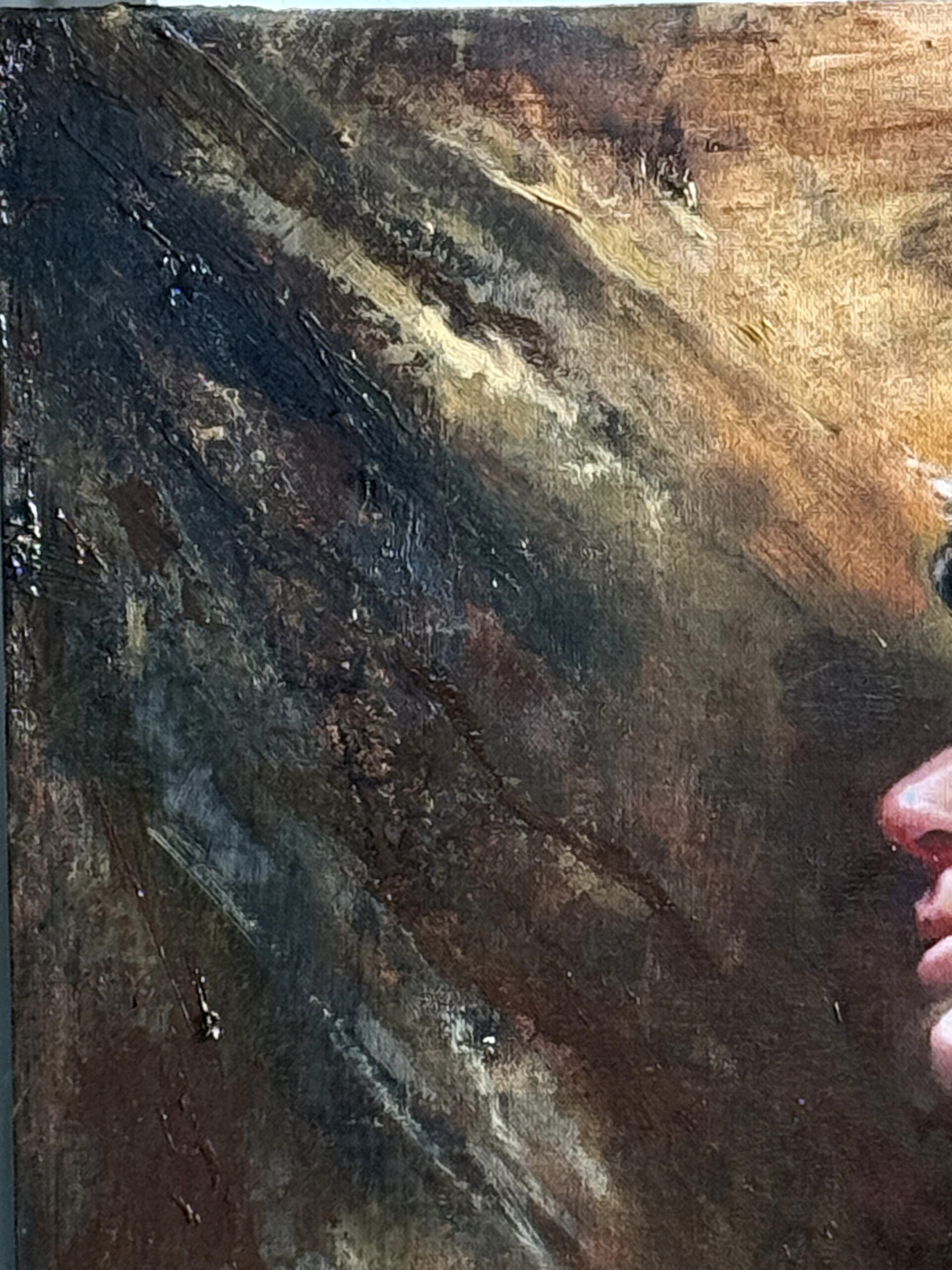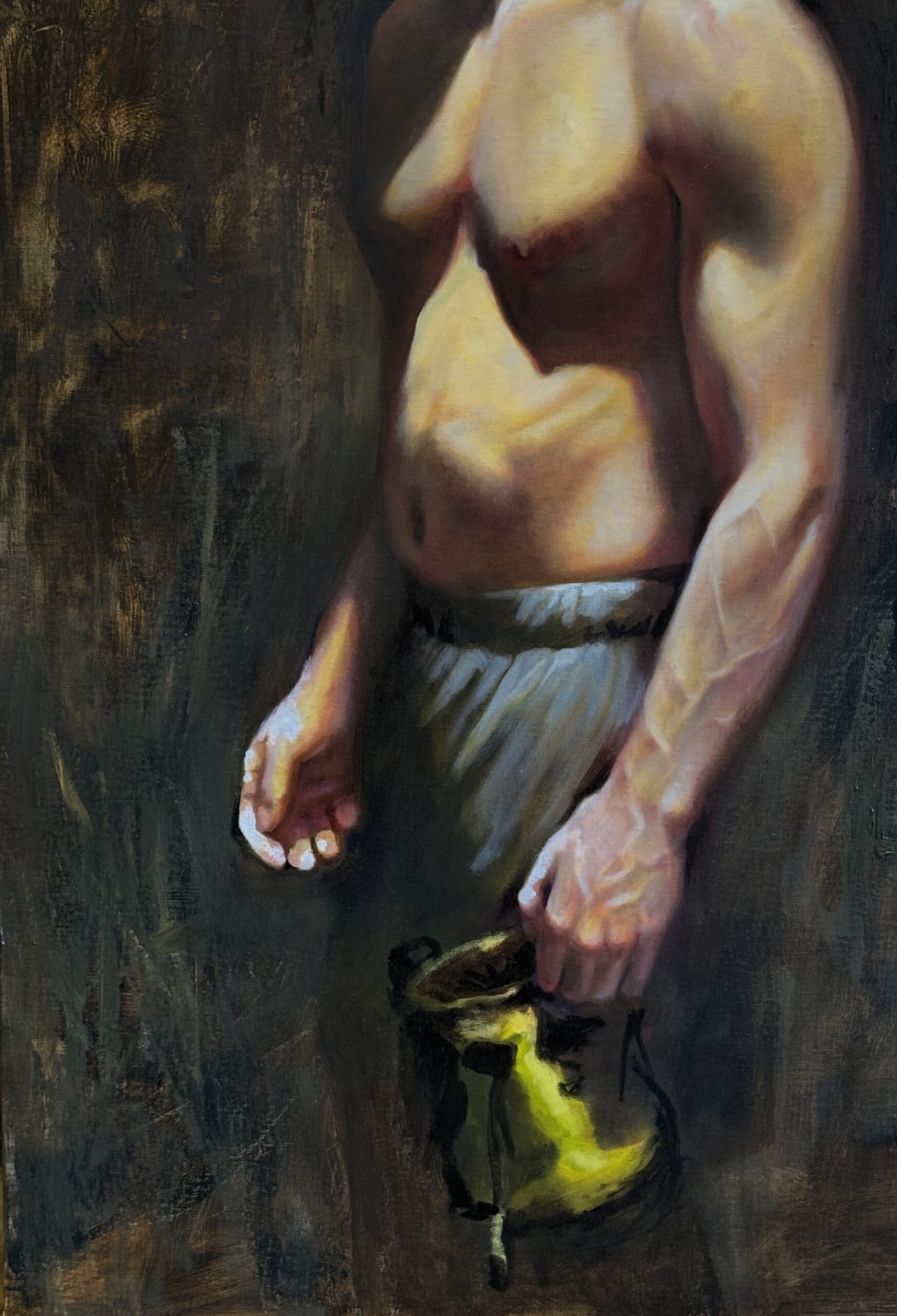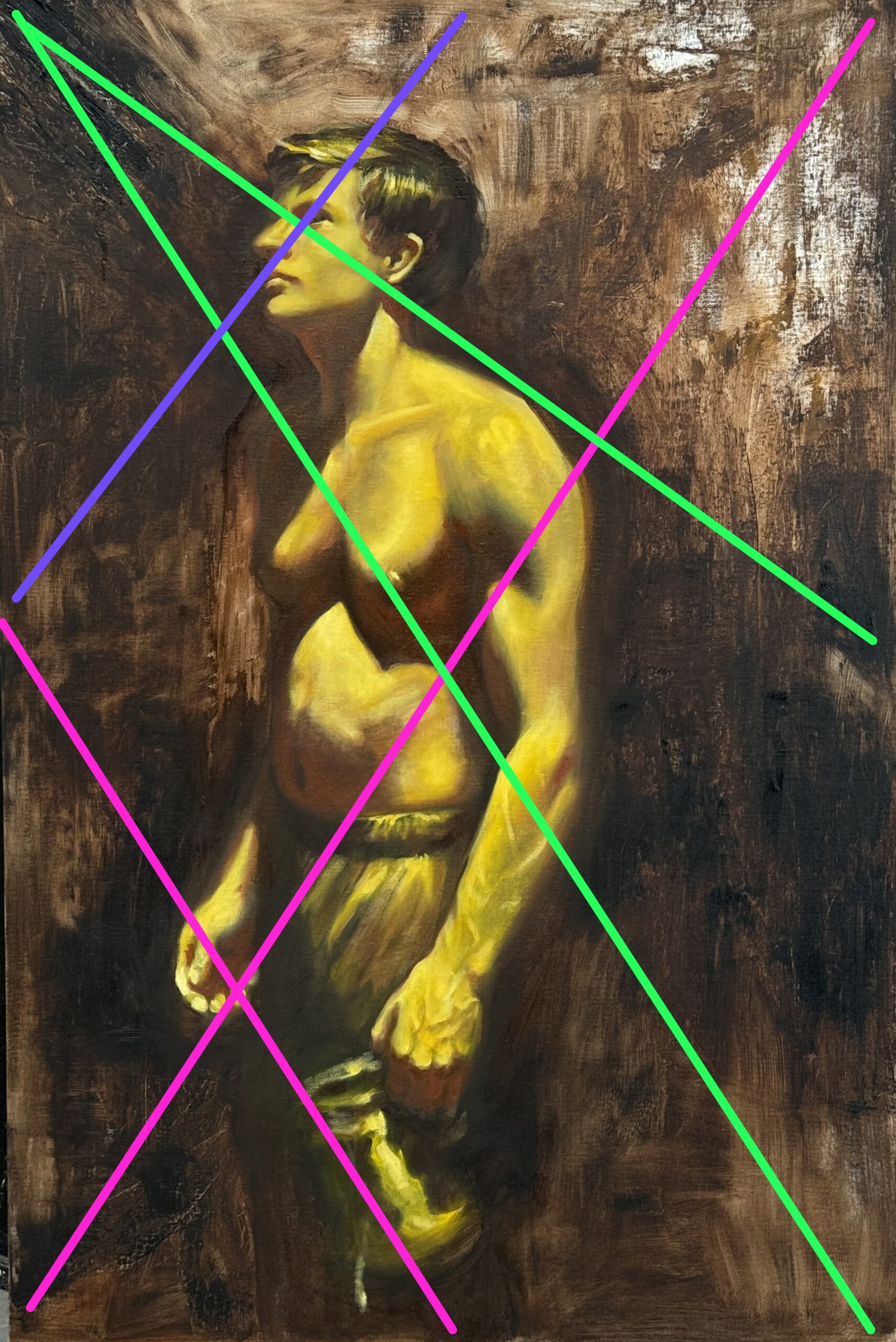
So a painting like this has many moving parts. And I’m always asking myself- “What is important? What should be let go?” “What do I just want to emphasize because I just want to?” and most importantly- “Am I getting in my own way?”
I knew right away when I started to design this piece that the hands were going to be important. That is why the fingertips on the left hand is on a “harmonic” of placement. See pink lines below. This “sweet spot” or intersection of placement according to the Pythagoreus Theorum of Harmonic Divisions of the Rectangle was discovered by Pythagoreus and was used by master artists for centuries. It is actually really fun to use and takes the guesswork out of design for me. (btw, if you are interested in learning more, my composition video teaches about how to use this system for designing paintings…just saying…)
So the placement in the painting is “locked in” on this spot which is then supported by diagonals. Hard edges on the hand along with the white of the chalk (lightest value) will make it an instant focal point along with his head. The chalk bag got tilted and the lightest lit part of the bag runs along this line to support this armature as well. Can I just say it is pretty cool that my son has chalk-covered hands so often and I often have pastel-covered hands. (you should see our cars- always marks on the doors… but mine are more colorful)
I was also having fun at this point with the kind of textures that are only achieved in oil – palette knife anyone? And those are along some planned diagonals as well. It all goes back to those beginning thumbnails and some other armatures that you can see below in green. Notice his eye and shoulder along a green line? Also the eye is on another intersect- note the purple line and how it crosses the green one. Bam! Eyeball placement. These lines are my “clothes hangers” and everything of importance gets “hung” on this structure. Was this planned out you say? Oh yeah. Big time. It is really helpful for background elements to support and sometimes to “point” to areas of importance. No more just guessing on backgrounds!
In between working on this piece I have done a few pastels, taught a workshop in Sante Fe, done a demo for the Southeastern Pastel Society, finished a commission, did a demo on flowers for the Carolina Plein Air Painters Exhibition, taught my mentorship classes every Tuesday and Wednesday, watched my son graduate from high school and have enjoyed my life with my friends with more than a few glasses of wine. I guess what I am saying is a painting like this takes time. I go back to it again and again and each time a new development takes place. So if you feel impatient finishing a large and complex painting, just know you are not alone and it can take a great amount of time and thought. Brain work.
More about the armatures next week.




Thank you. A while ago, after you had introduced me to the Pythagorean theorem, I notice a huge change in the way I looked at paintings, photographs, and even in the great outdoors. I had begun to look for the “composition” first. Not saying that I am an expert, far from it. Just an observation. Ever learning, never stopping. Thanks again.
You bet! 🙂